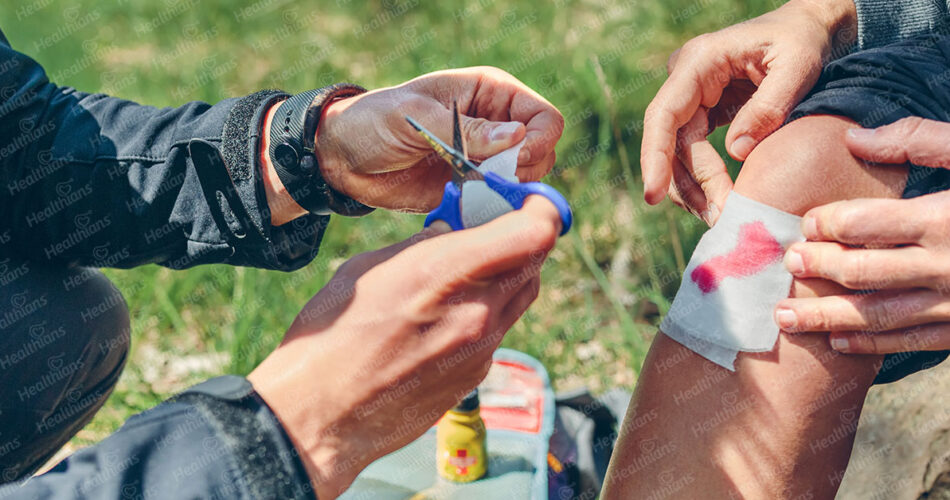Picture this. You’re on your way home, planning the chores and things you have to do once you reach. All of a sudden, you see a wounded child who probably got injured while playing. He is in pain and constantly crying. He is bleeding profusely. What would you do? It’s a given you would rush to help, wouldn’t you? But what would you do to help?
We know instances like these can make anyone panic but it’s important that we keep calm and follow the right steps to make things better for the one in pain. But what are the right steps? What should one do to stop bleeding – especially when the bleeding is severe?
Here is a guide that can come to your rescue to deal with instances of severe bleeding.
First things first:
- Call for emergency services. You can’t be performing first-aid for long. Not to mention, medical help is essential. You are only helping for the time being.
- Encourage the wounded person to lay or sit down. In case they feel dizzy or show symptoms of shock, raise their legs.
- Carefully examine the wound to assess the type and extent of bleeding. Also, look for the source of bleeding.
- Look for foreign objects embedded in the wound – such as a piece of glass or metal. DO NOT TRY TO REMOVE THE OBJECT. Instead, you must apply direct pressure on either side of the object.
- Ensure your hands are clean. Dirty hands can increase the risk of the patient developing infections. Wash and sanitise your hands.
What you need to do in the time being
Apply direct compression
Direct compression is essential in managing severe bleeding due to its pivotal role in minimising blood loss and preventing clot formation. When direct pressure is applied to the wound through a compression bandage or dressing, it helps constrict blood vessels, reducing the flow of blood from the injured area. This constriction aids in preventing clots, which is crucial for staunching bleeding and initiating the healing process.
Moreover, compression helps to create a barrier, limiting the extent of the injury and preventing additional complications. By promptly applying compression, you not only control the immediate danger of excessive bleeding but also contribute to the overall stability of the individual, increasing their chances of a successful recovery.
Here is how to do it
- Look for any clean cloth to cover the wound. You can use a piece of clothing like a shirt.
- In case the wound is deep and large, try to “stuff” the cloth down into the wound to prevent bleeding.
- Apply continuous pressure on top of the bleeding wound with both hands.
- Push down as hard as you can try.
- Keep holding the pressure to stop bleeding. Continue putting pressure until the medical services come.
Raise the affected area
Elevating the wounded limb helps minimise blood flow, reducing the risk of excessive bleeding. Ideally, raise the injured area above heart level. This simple action aids in controlling the haemorrhage and promotes a more stable condition.
Check for shock
Bleeding can lead to shock, a life-threatening condition. Shock occurs when the body’s vital organs receive insufficient blood and oxygen due to a significant loss of blood. Symptoms of shock include paleness, rapid or shallow breathing, a weak or rapid pulse, and cool, clammy skin. If any of these signs are observed, it’s crucial to address shock promptly. Lay the individual down, elevate their legs if possible, and cover them with a blanket to maintain body warmth. These actions help improve blood circulation to vital organs and mitigate the effects of shock.
Keep monitoring changes
Vigilance is key. Continuously assess the individual for changes in consciousness, breathing, and skin colour. Promptly update emergency services about any developments.
Consider applying a compression bandage if available
If at hand, a compression bandage can be a game-changer. Apply firm but not too tight pressure to the wound using a sterile dressing, gauze, or any clean cloth.
Closing thoughts: Wait for emergency services to arrive
Remember, your role as a first responder is invaluable, but it’s a temporary measure. Emergency services bring advanced medical expertise and equipment, ensuring the best possible care for the individual. By providing them with accurate and timely information, you contribute significantly to a seamless transition of care and increase the chances of a positive outcome for the person in need. Stay vigilant, stay informed, and continue to offer support until professional help arrives.




